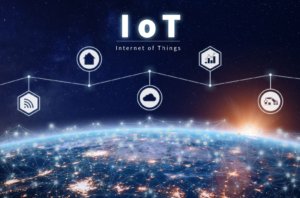11.05.2019
Mitigating Risks of IoT Technologies
 Look around you right now. It’s okay, I’ll wait. How many devices in your surroundings connect to the Internet? I bet it is far more than you think! Estimates indicate that our world will have more than 30 billion IoT (Internet of Things) devices by 2020 and more than 75 billion by 2025. An IoT device is defined as any device that has a sensor attached which can transmit data from one object to another.
Look around you right now. It’s okay, I’ll wait. How many devices in your surroundings connect to the Internet? I bet it is far more than you think! Estimates indicate that our world will have more than 30 billion IoT (Internet of Things) devices by 2020 and more than 75 billion by 2025. An IoT device is defined as any device that has a sensor attached which can transmit data from one object to another.
The ability to use IoT devices in the electrical contracting field offers Faith Technologies, as a service provider, a number of advantages:
- Observation of equipment analytics
- Performing remote diagnoses
- Enhanced communication between devices
- Increased automation and control
- Predictive maintenance to solve customer issues before a minor issue becomes a serious problem
The service offerings we are able to provide by utilizing IoT technologies are amazing. However, we must remain cognizant that with the transmission of IoT data, there are increased risks of privacy breaches, security hacks, and increased complexities related to the networks on which the data travels. As Voltaire once said (or Uncle Ben in Spiderman if you prefer the Marvel-verse), “[w]ith great power, comes great responsibility.”
Most IoT risks can be effectively mitigated by establishing proper IoT cybersecurity countermeasures. Some of these countermeasures are quite simple, such as changing default passwords during initial setup, not allowing weak passwords, setting up an account lockout after a certain number of login attempts and enabling some sort of multi-factor authentication. We can also make sure to limit our data collection to only data that is critical to the functionality of the device. If sensitive data must be collected, we can ensure it is collected in an encrypted manner and that all software, firmware and cloud-based platforms maintain adequate levels of security. We must also make sure that the device installed is physically secure.
Both Faith and our customers must have a clear understanding of the benefits and risks associated with IoT devices. Together we can work to be sure that the installed devices can communicate the critically beneficial information they contain in the securest possible manner. With proper education and communication with our customers, we can ensure that they receive all the benefits of IoT technologies with minimal risk.
If you enjoyed this blog article, please subscribe to stay up to date on the latest industry news from our experts at Faith Technologies.




